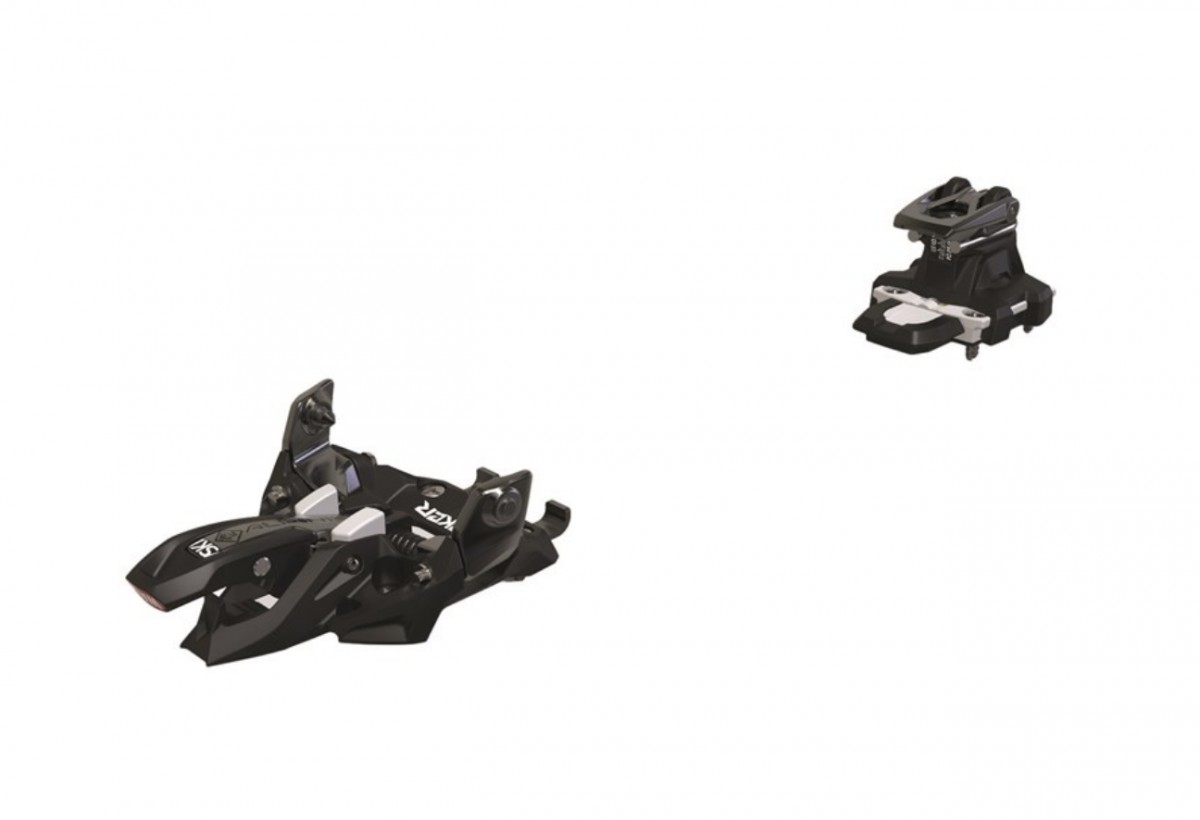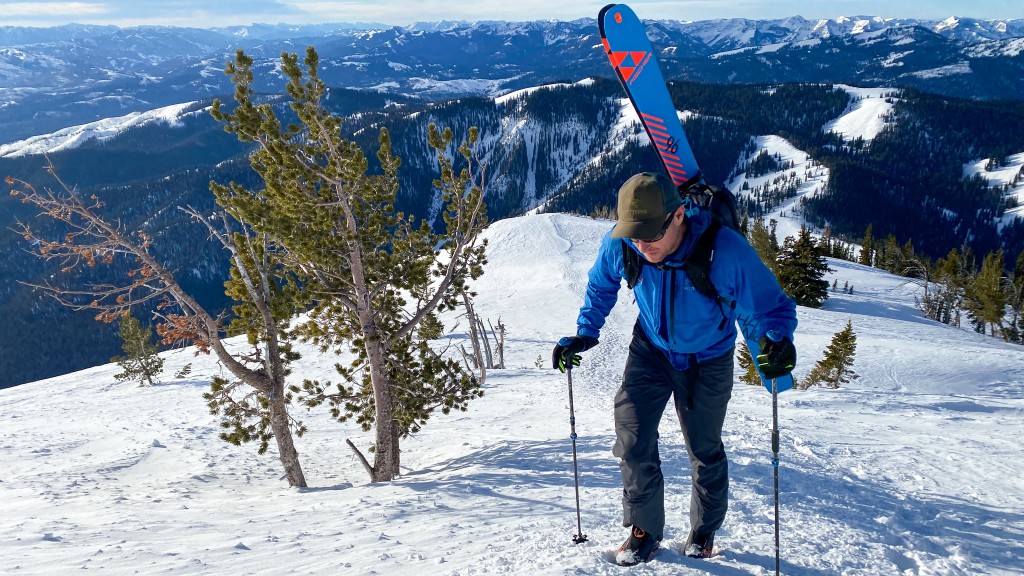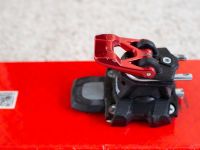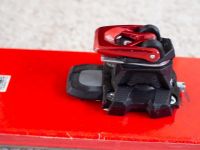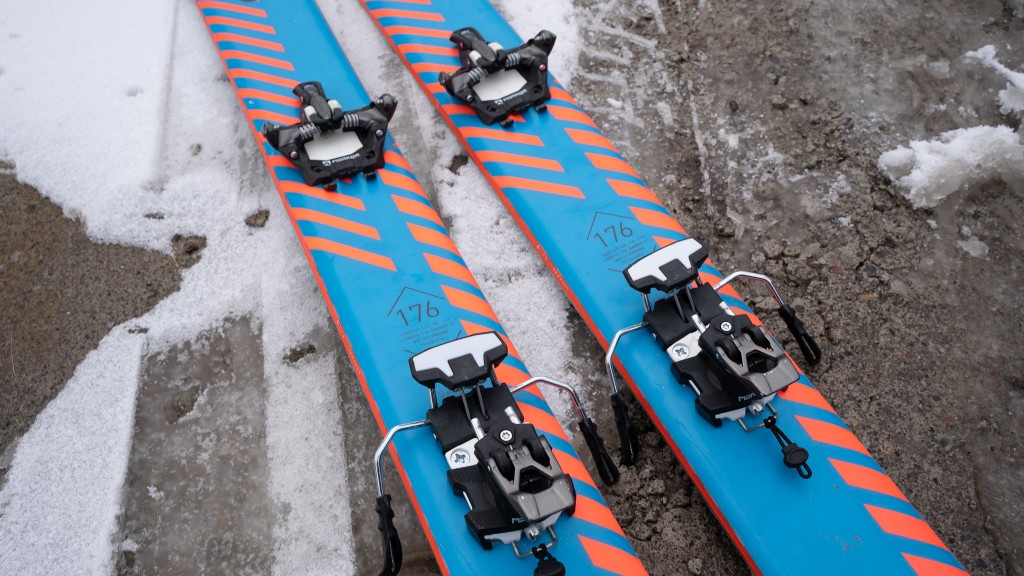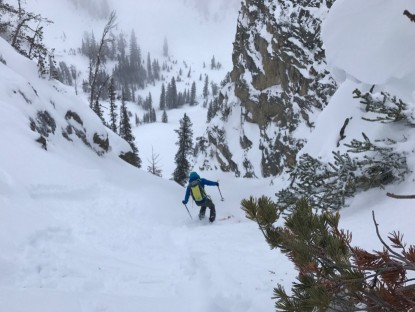Marker Alpinist Review
Our Verdict
Compare to Similar Products
 This Product
Marker Alpinist | |||||
|---|---|---|---|---|---|
| Awards | |||||
| Price | Check Price at Backcountry Compare at 3 sellers | $445 List $351.16 at Backcountry | $500 List $417.49 at Amazon | $490 List $391.96 at Backcountry | $346.49 at Amazon Compare at 2 sellers |
Overall Score  |
|||||
| Star Rating | |||||
| Bottom Line | For any sort of human-powered wild skiing, this is a reliable choice | For moderate backcountry skiing, these bindings could be just the ultralight ticket you need | Check these out if race-style bindings in the backcountry are an idea that piques your interest | Lightweight bindings with important adjustments for length and release value | Through all the turmoil, its lineage remains reliable, simple, and affordable |
| Rating Categories | Marker Alpinist | Plum R170 | ATK Trofeo | Plum Oazo 8 | Dynafit Speed Turn |
| Weight (35%) | |||||
| Downhill Performance (25%) | |||||
| Touring Performance (20%) | |||||
| Ease of Use (15%) | |||||
| Durability (5%) | |||||
| Specs | Marker Alpinist | Plum R170 | ATK Trofeo | Plum Oazo 8 | Dynafit Speed Turn |
| Weight (pounds for pair) | 1.18 | 0.88 | 0.73 | 1.04 | 1.63 |
| Weight of one binding and screws. Lightest possible configuration w/o brakes (in grams) | 297 | 199 | 166 | 237 | 370 |
| Weight of 2 bindings Multiple options are noted where we have tested multiple options. (in grams) | 594. 796 with brakes | 398 | 331 | 474 | 740 |
| Release value range | 4 to 10 | 8 Fixed | 1 to 10 | 4 to 10 | 4 to 10 |
| Stack height: average of toe and heel pin height (in mm) | 36 | 34 | 31 | 34 | 38 |
| Toe/heel delta: difference in height between heel pins and toe pins (in mm) | 3 | 4 | 1 | 3 | 17 |
| Brakes? | Optional | No | No | Optional | No |
| Brake width options | 90, 105, 115 mm | N/a | N/a | 80, 90, 100, 110 mm | N/a |
| ISO/DIN Certified? | No | No | No | No | No |
| Ski Crampon compatible? | Yes. "Standard" style. Not all crampons will be cross-compatible | With aftermarket part. Best with Plum brand. "Standard" Dynafit/B&D style ski crampons can be lightly filed to work. | Yes. "Standard" style. Not all crampons will be cross-compatible | Yes. "Standard" style. Not all crampons will be cross-compatible | Yes. "Standard" style. Not all crampons will be cross-compatible |
Our Analysis and Test Results
Marker calls the Alpinist their "ultralight" binding "for high alpine challenges"; we call it our favorite binding for all-around human-powered skiing. It's tied as our favorite, with the other high scorer, the Atomic Backland Tour. The weight to performance ratio of the Alpinist (and the Atomic) hits what is currently the AT ski binding sweet spot, and these bindings stand up to the most robust downhill backcountry skiing (unless you have a film crew and associated emergency response team; only then might you be skiing hard enough, with enough safety margin, to leverage the advantages of a heavier binding) and virtually disappear on the uphill. The Marker Alpinist has all the efficiency and features we've come to expect in the last three decades of tech binding evolution, with Marker's refinement and downhill ski performance additions.
Performance Comparison
Weight
Marker calls these "ultralight" and alludes to specialized applications. Many skiers see them the same way. We'd like to suggest, though, that the time is now for this weight class of bindings to become the "standard". The Alpinist does all you need your AT ski bindings to do unless you once frequently had the abbreviation "FIS" on your calendar and ski into the wild with that same energy.
The Alpinist's weight threshold is manageable whether stripped down to 267 grams per binding (no brakes, which is how we tested them) or bulked up with the long travel base and wide brakes. There are lighter bindings, but anything lighter delivers compromised performance in one way or another.
Downhill Performance
The Alpinist skis downhill better than any other binding we've used in this weight class, and you need to bump up many ounces to match the heel elasticity, solid retention feel, and adjustable release. Something about the construction makes the attachment feel both solid and "damp". If we had to guess, we'd say it's the mixture of materials. Chattery conditions are absorbed, to just a tiny degree, better than by other lightweight tech bindings.
We also dig the adjustable release. For a binding, this svelte, nuanced release value adjustment (note that we are not referencing "DIN values"… the Alpinist is not certified. The numbers that accompany the Alpinist release adjustment might look familiar, but they are not DIN Certified numbers) is virtually unheard of. Because there is not a third party standing by the release function, your engagement, caution, and experimentation are required with the Alpinist, just as with any tech binding.
Touring Performance
The minimalist form of the Alpinist keeps it simple and minimizes the propensity for icing. We look for all the other uphill touring attributes: three heel riser levels and full toe piece pivot range of motion.
The mixed materials (metal, carbon fiber, plastic) seem to leave the Alpinist a little more vulnerable to icing than similarly small bindings. Also, the three levels of heel riser require rotating the heel piece to use them all. Spin the heel pins backward, and you get flat on the ski and high riser. Spin the heel pins forward and flip the lever the same direction, and you get a mid-height riser; this isn't as easy as other arrangements that deliver three levels. Speaking of the three heel riser levels, the difference between all three is relatively minimal. The three levels cover a more similar range to the first two levels of other three-level bindings. See our comparison pictures for the different heel level orientations.
Ease of Use
The toe piece is familiar and reliable, and it isn't any easier or harder to get into than any other standard tech binding. The u-spring fixes the vertical release, but the lateral release can be adjusted between what Marker calls values of 6 and 12; doing so requires a Torx #20 bit. Length adjustment is performed with a large flat or Phillips bit and is measured by eye only; no spacer or measurement tool is required. We like this.
We tested the standard Alpinist binding, which has 15mm of adjustment range once mounted. For most folks, with just a little planning at the time of mounting, this allows you to use Alpinist-equipped skis with your little go-fast boots and with burlier boots of similar shell size. If you'll share Alpinist-mounted skis with a family or between, say, tight light boots and oversized beefier boots, select the so-called "Long Travel" version of the Alpinist. The LT version doubles the track length to allow 30cm of heel piece adjustment.
Our one usability concern was at the time of mounting. We wanted, like most should want, to include the ski crampon holder with the toe piece. It attaches with the toe piece mounting screws and fits into a recessed portion in the bottom of the plastic toe base plate. The crampon holder was quite a bit bigger than the recessed portion allowed. A tiny bit of knife-blade excavation fixed the issue, but this seems like a problem that we shouldn't have to address.
Durability
These are relatively new bindings from a company that is simultaneously as familiar as possible while also being a brand new player. We've had absolutely no problems yet; however, our testing is ongoing, and we will report back with any concerns we may have. Marker's first tech binding, the one-time OGL award-winning KingPin, was plagued by early failures and recalls. They seem to have learned something from that process, and, since its first season, the Alpinist binding has been blessedly quiet.
Interestingly, we find lightweight touring tech bindings to be relatively reliable, even over a long test period. The simplicity of construction is mainly responsible for this. Heavier bindings add features but keep the main load-bearing parts similar in size. Further, backcountry skiing, no matter what gear you are using, is a high-consequence endeavor. Whether you have the safest, feature-rich bindings out there or the lightest, simplest options, the consequences of a fall are great just by your position on the planet. Ride gently, as you should, and your gear will thank you for it.
Should you buy the Marker Alpinist?
Yes. After many seasons of testing now, we continue to have favorable experiences with the Marker Alpinist. We watch others do the same thing. You can go lighter, but you lose functionality. You can get better downhill performance, but you tack on a great deal of weight.
What Other AT Bindings Should You Consider?
You also have to be considering the Atomic Backland Tour. We couldn't pick between these two in deciding to grant our highest award. There are subtle differences, but both are great all around performers. Up and coming and newer to our test is the ATK Crest 10. The Crest has all the same basic features, but many of them are compromised as compared to the Alpinist. The Crest has less length adjustment range and the heel lifters are clumsier. The Crest also has a narrower range of release value adjustment.


